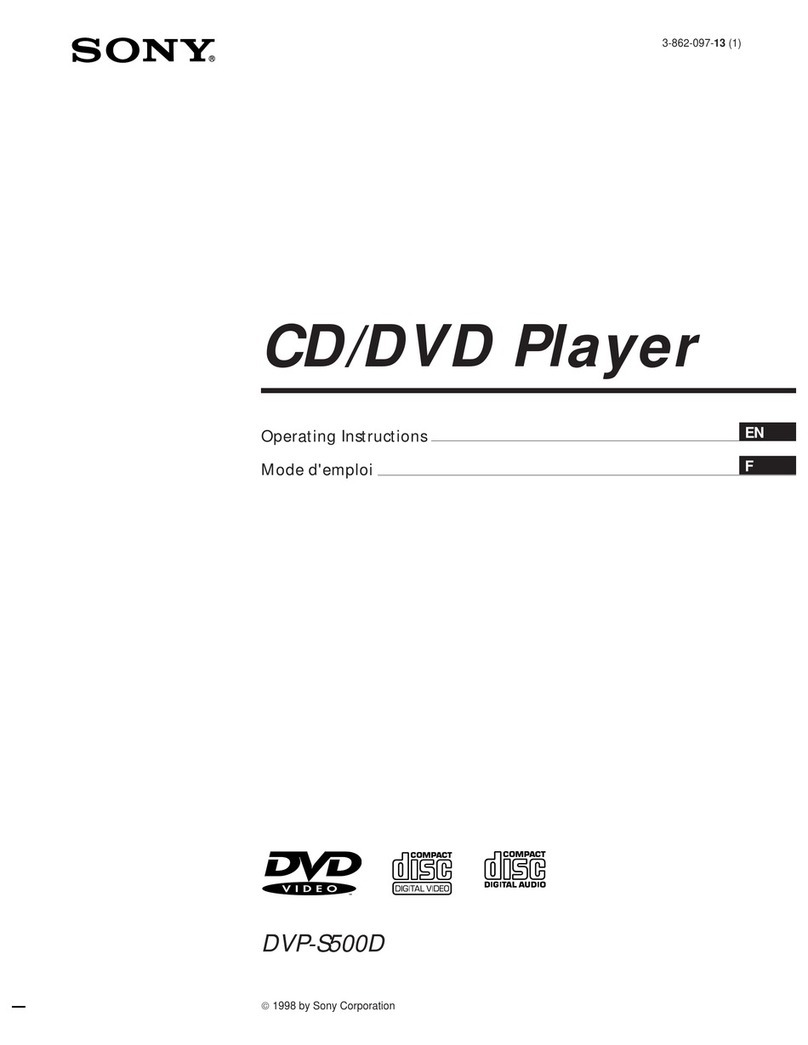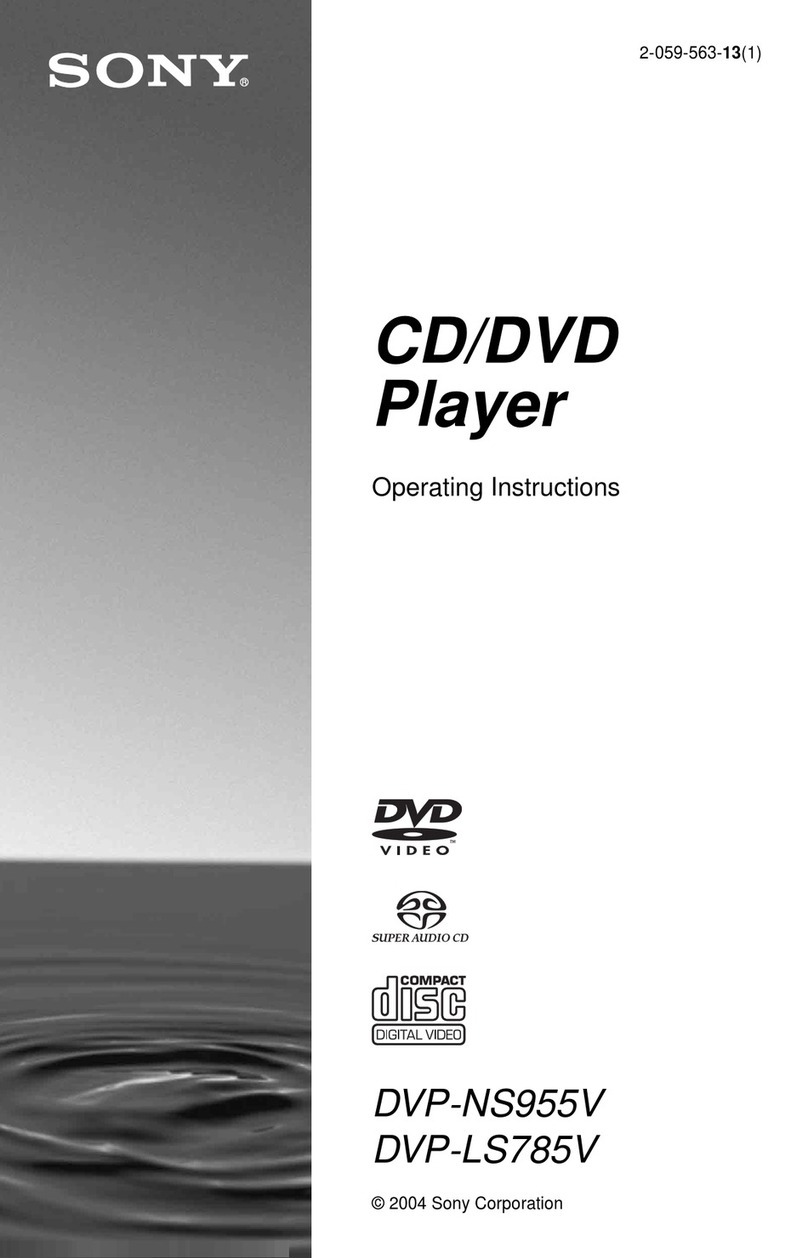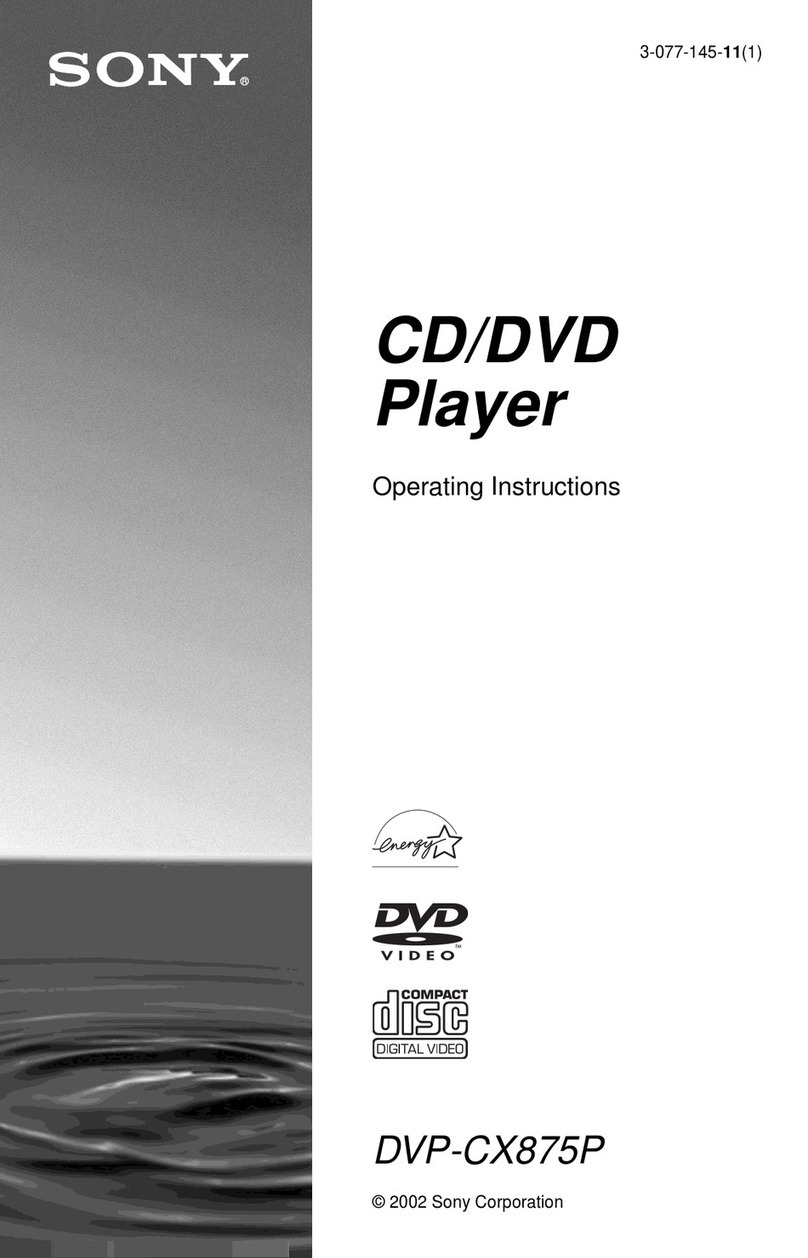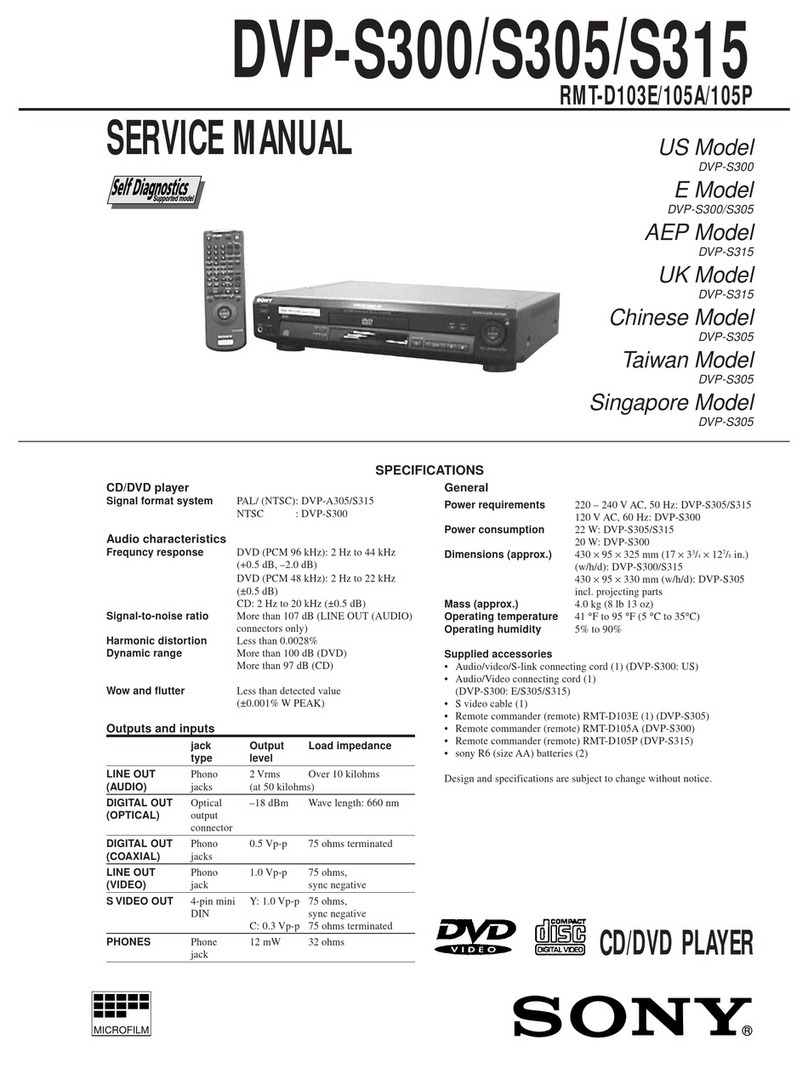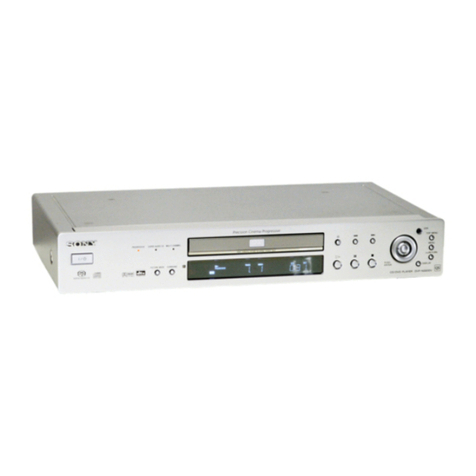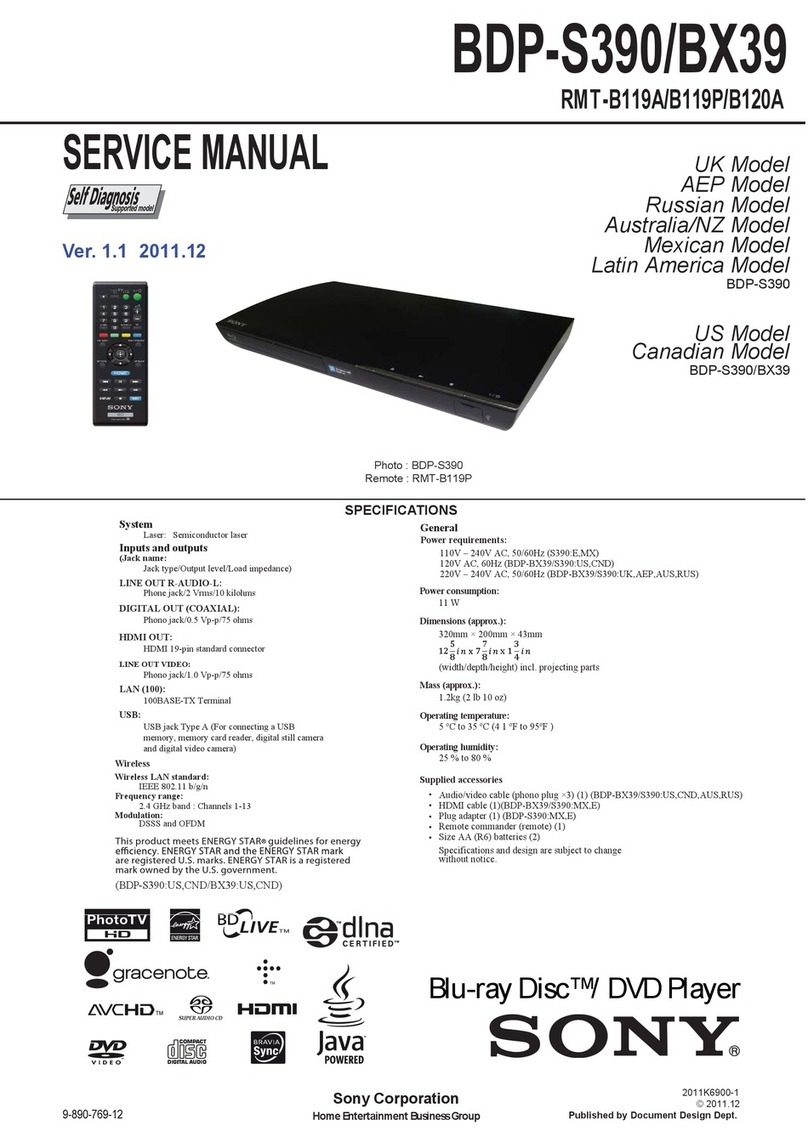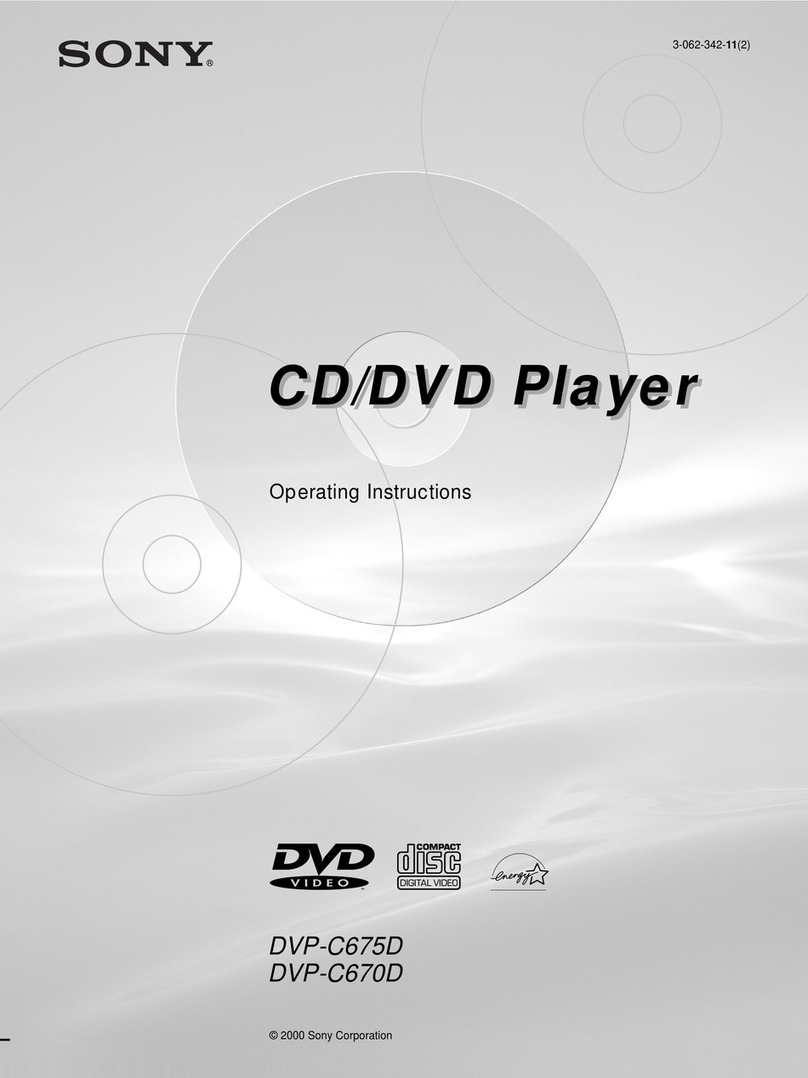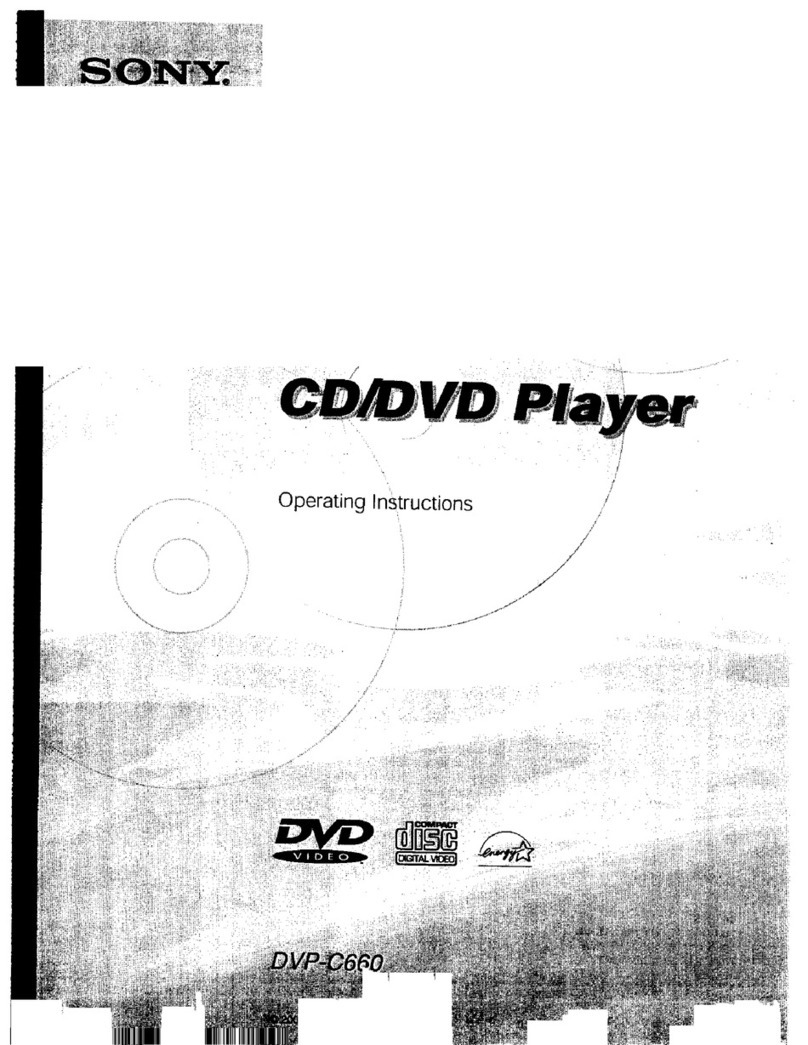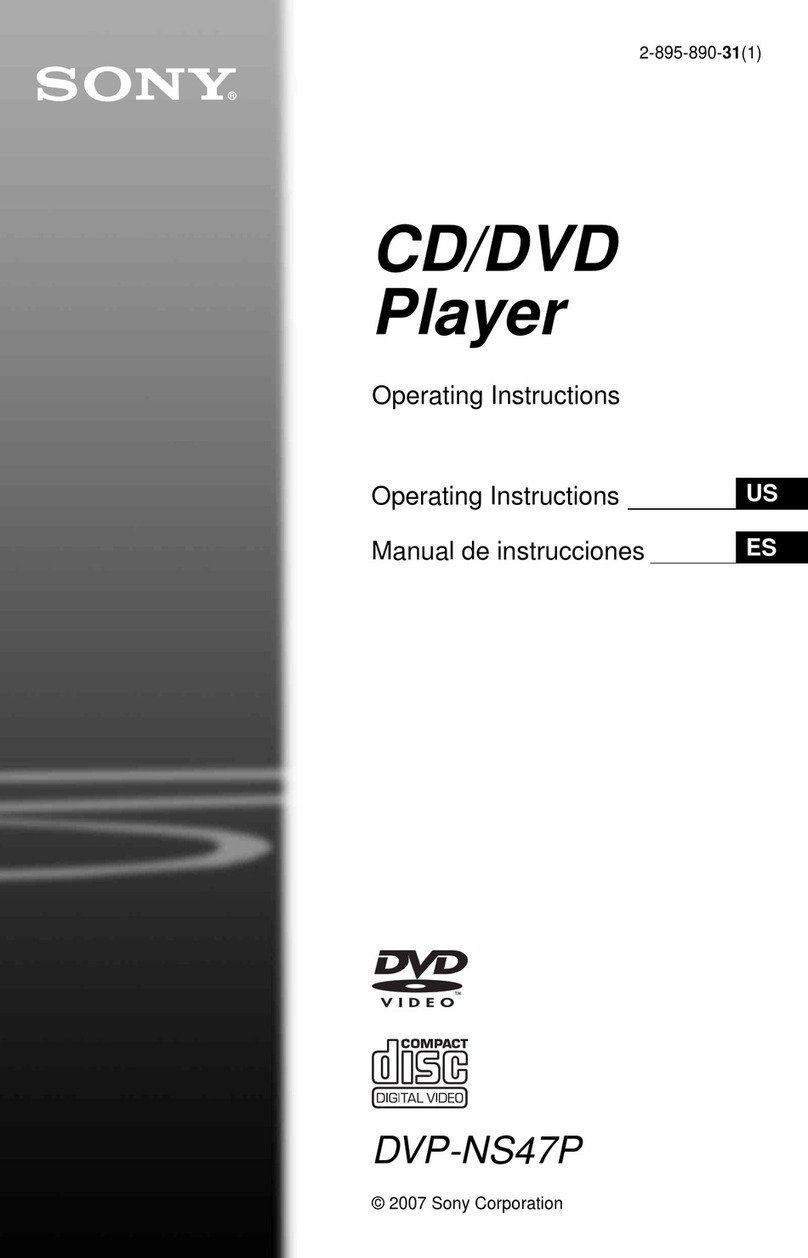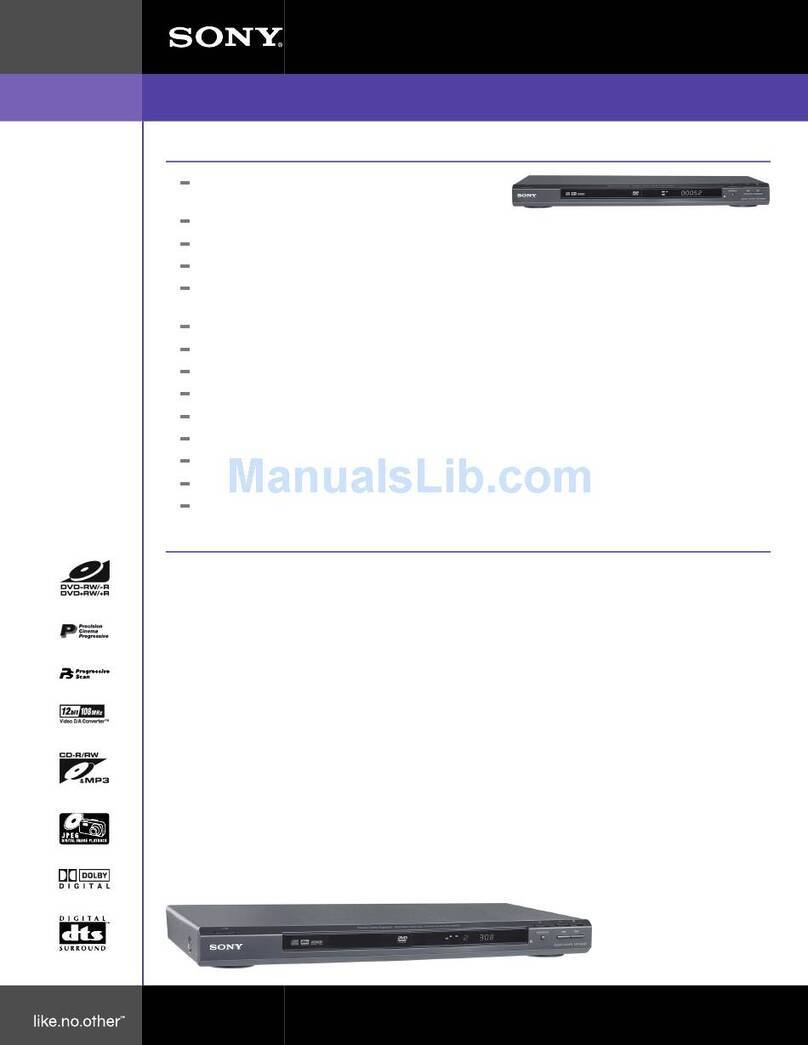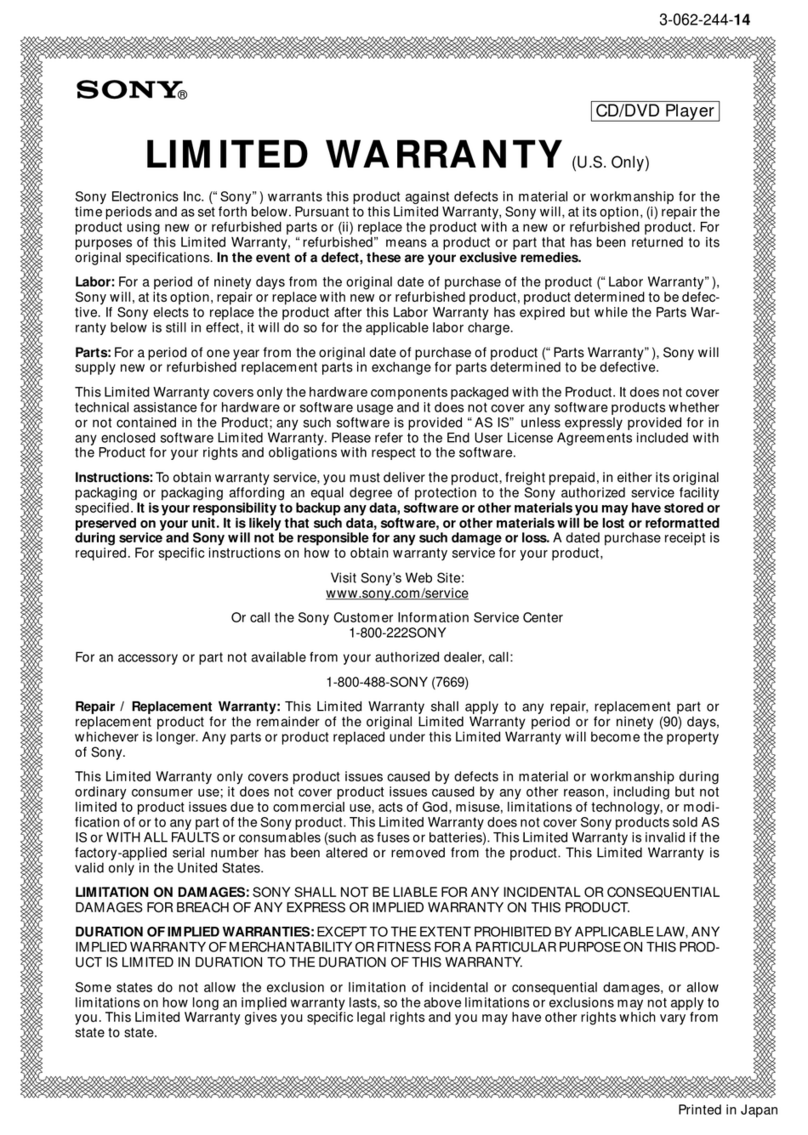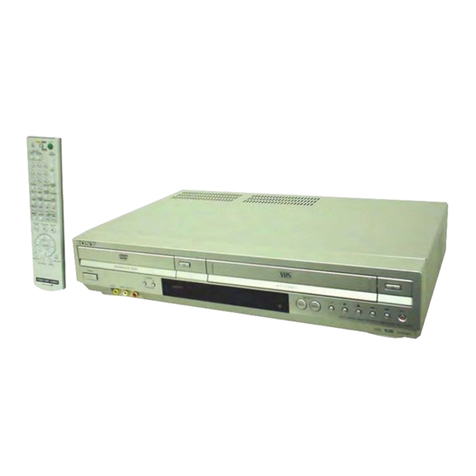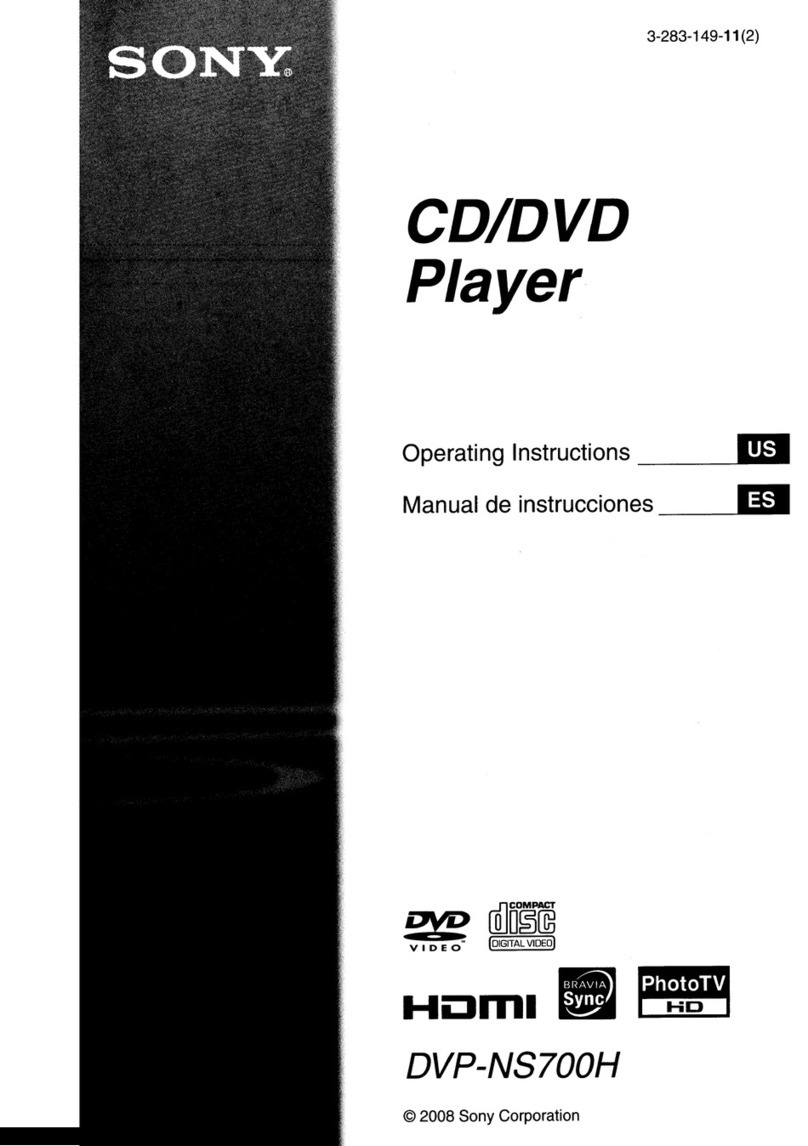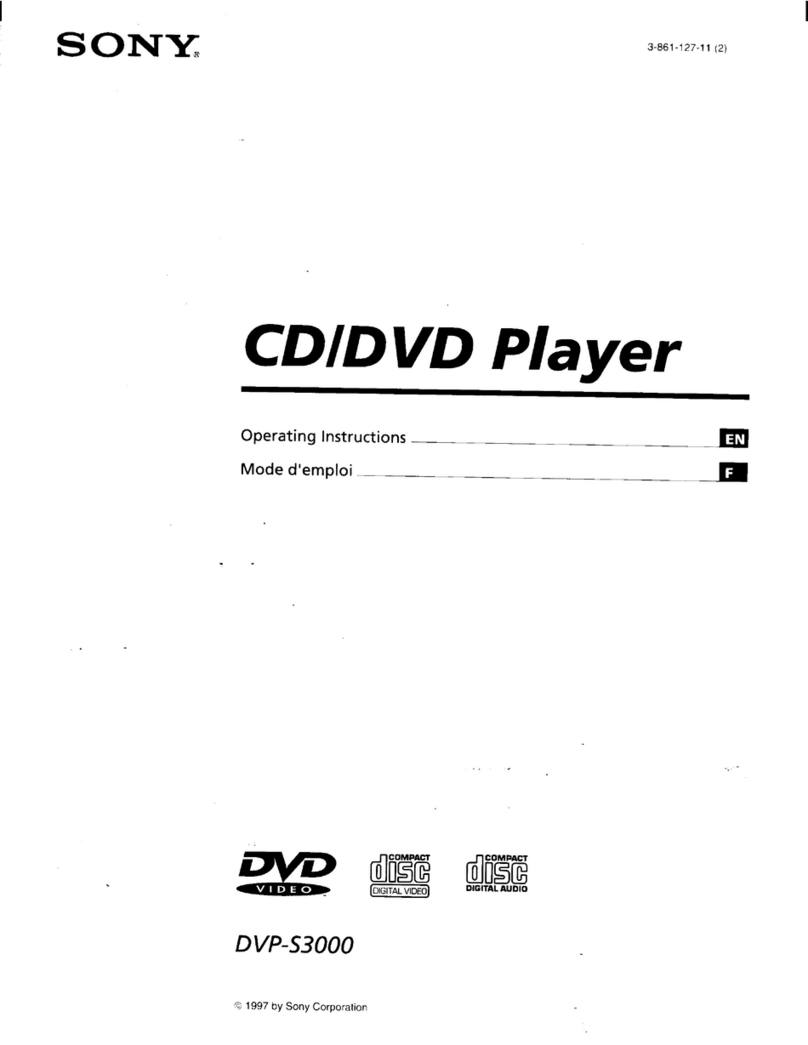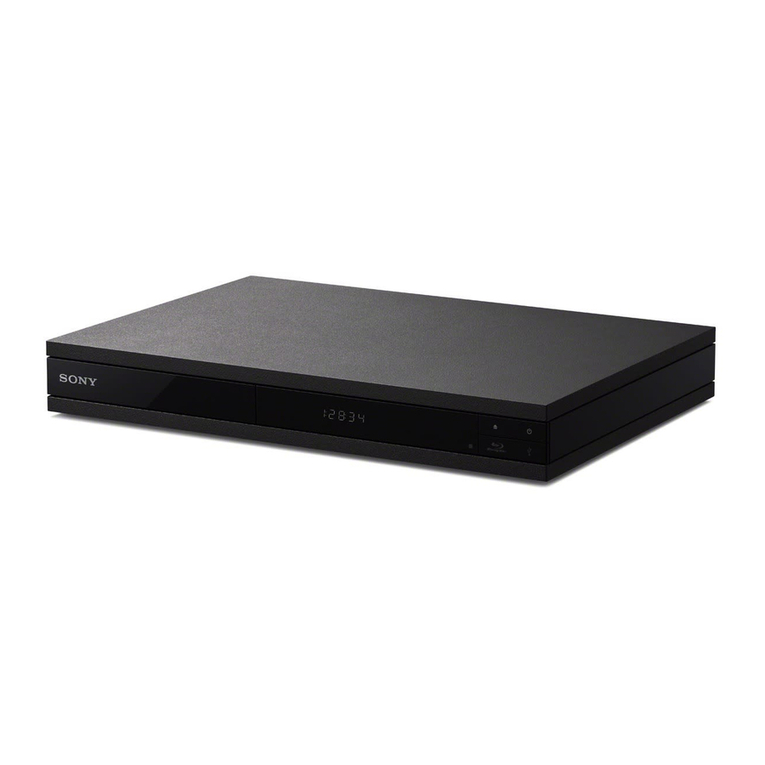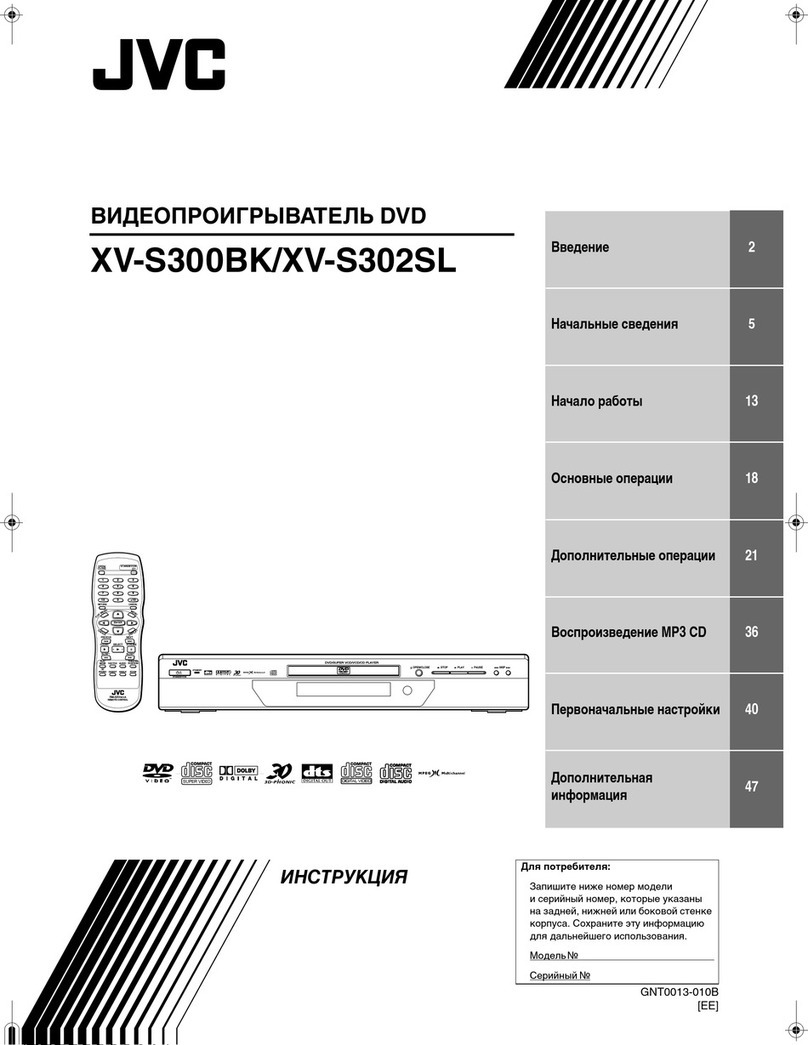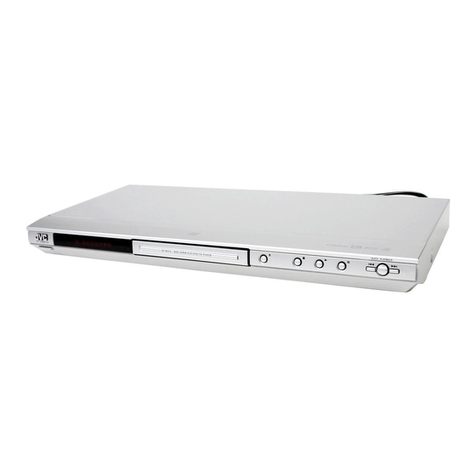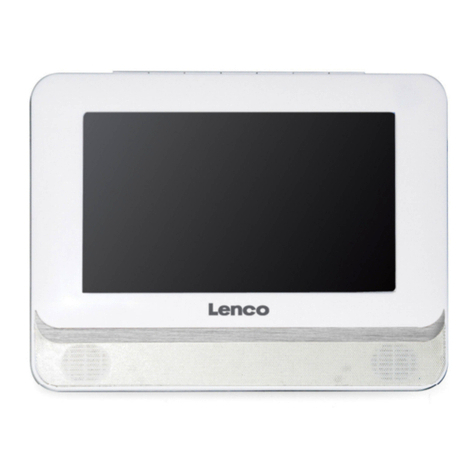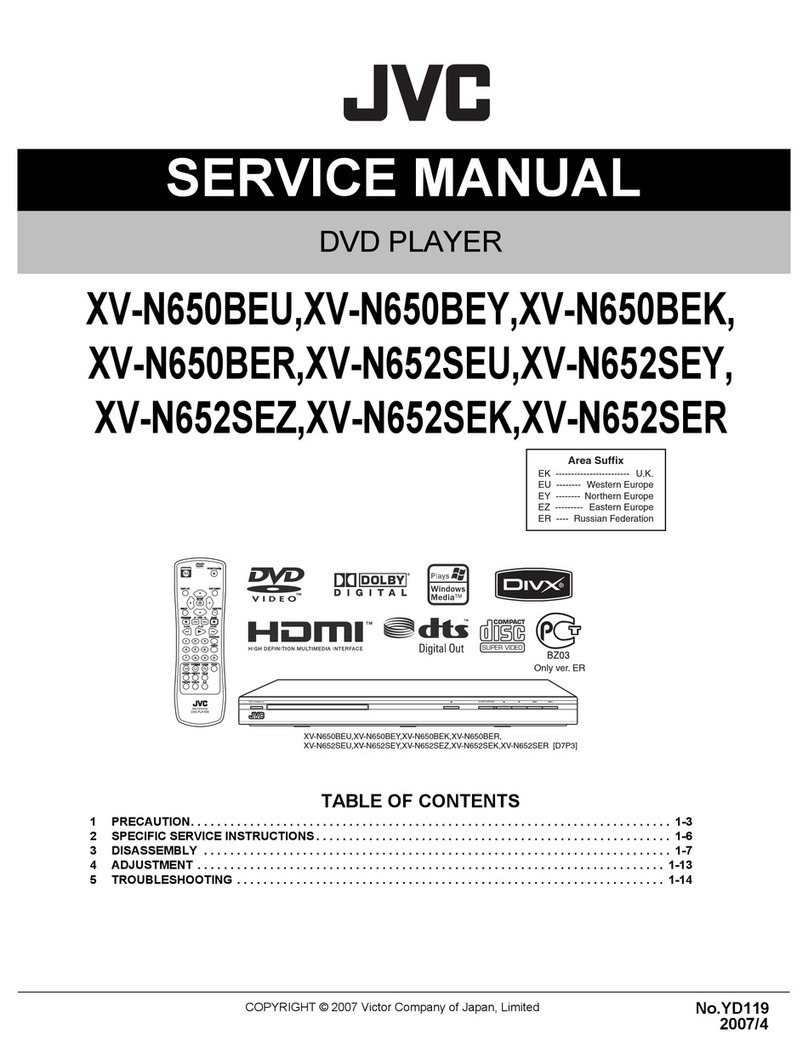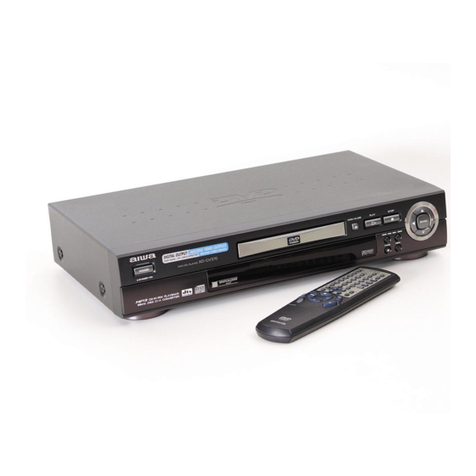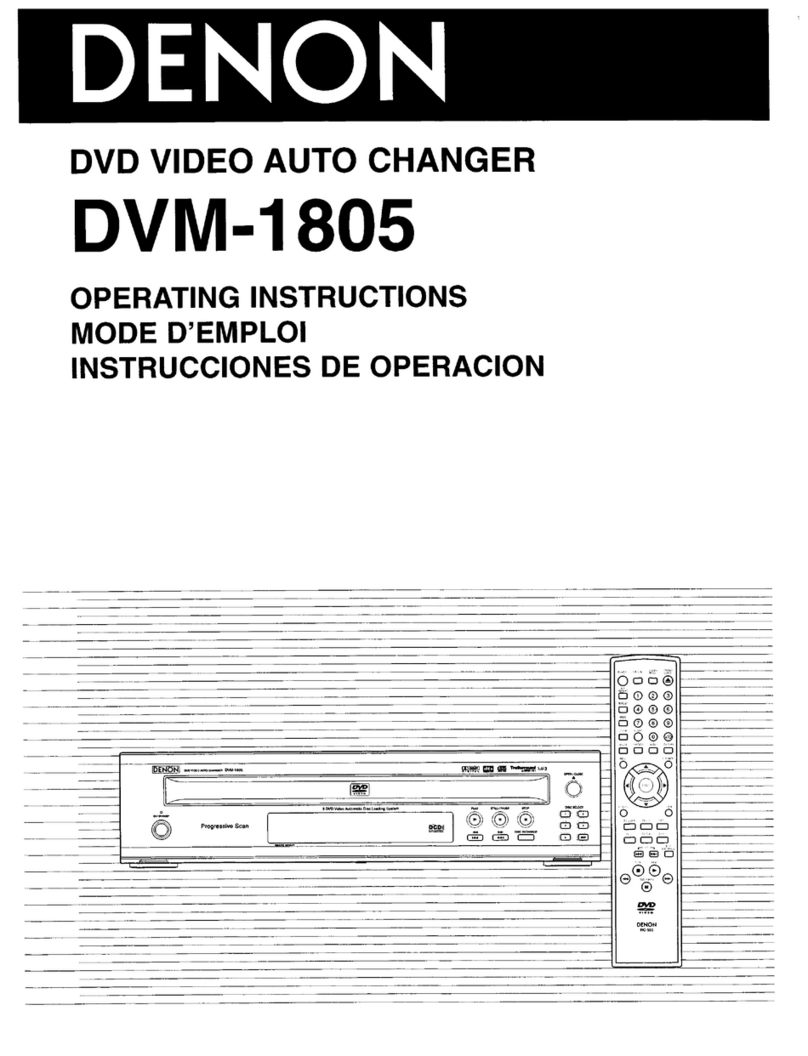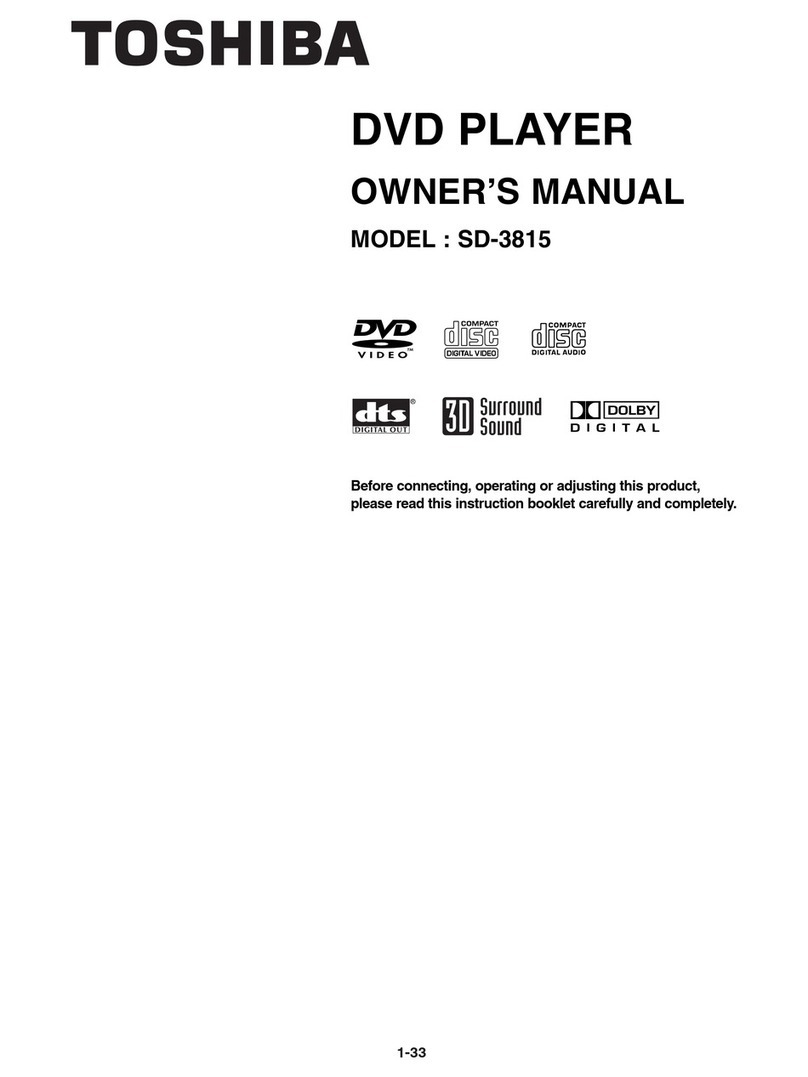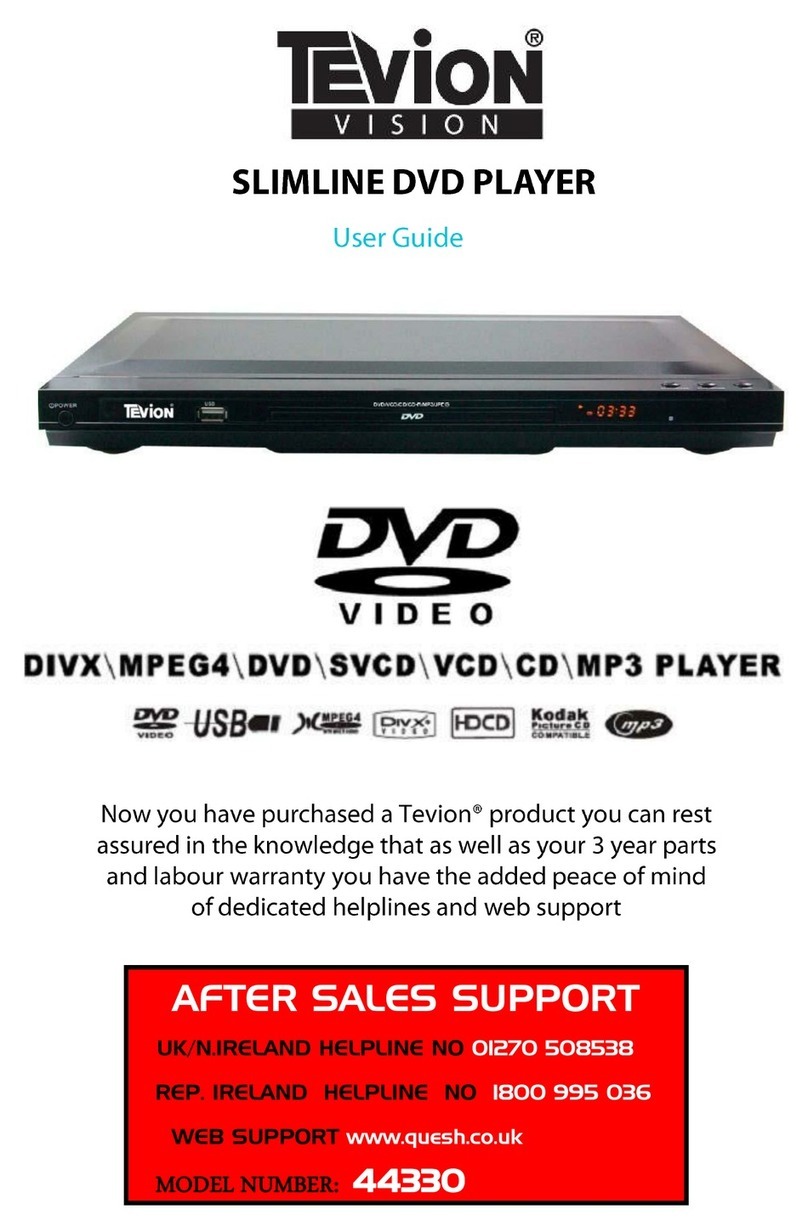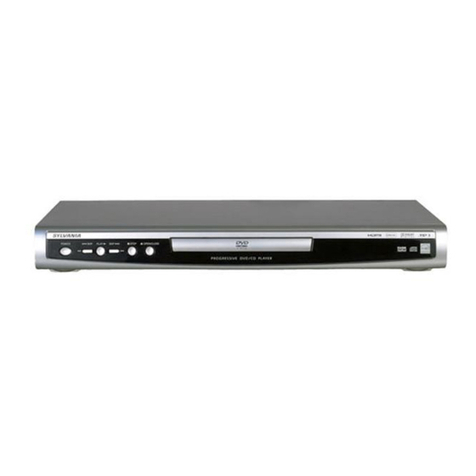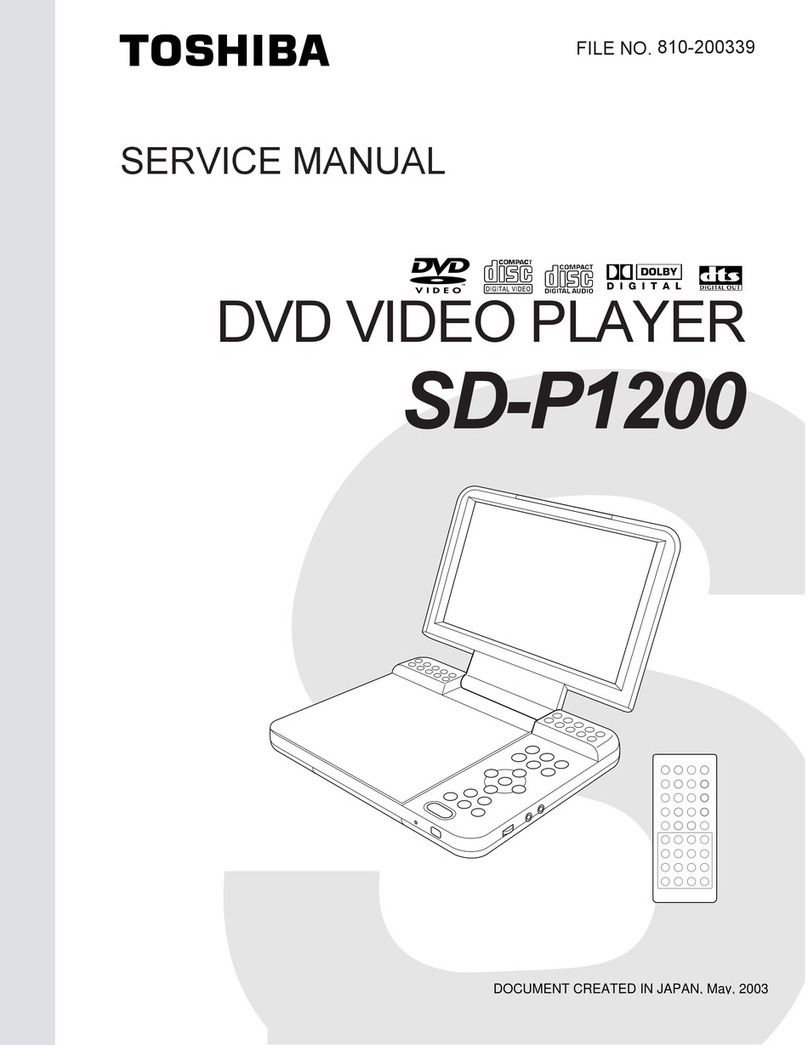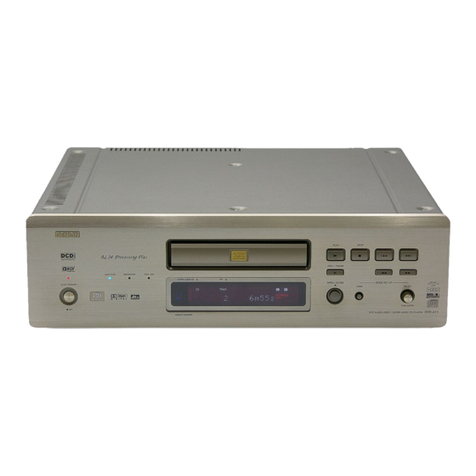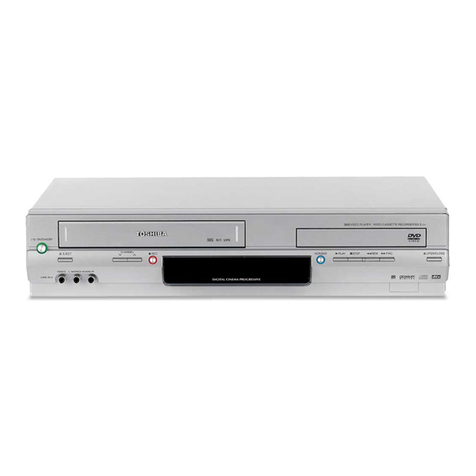
TABLE OF CONTENTS
1.
GENERAL
DESCRIPTION
1-1.
Features
. . . . . . . . . . . . . . . . . . . . . . . . .
1-1
1-2. Tips
on
Videodiscs . . . . . . . . . . . . . . . . . . 1-2
1-3. Precautions
.......................
1-5
1-4. Notes
on
Handling Videodiscs
...........
1-6
1-5. Parts
Identification
. . . . . . . . . . . . . . . . . .
1-
7
1-6.
Connections
. . . . . . . . . . . . . . . . . . . . . . 1-13
1-7.
To
Play Back a Videodisc
..............
1-15
1-8. Various Playback Modes
..............
1-17
1-9. Search
and
Repeat
Operations
...........
1-18
1-10. Notes
on
Operation
with
the
RM-2001
Remote
Control
Unit 1-19
1-11.
Connection
with an External
Computer
. . . . 1-20
1-12.
NoteonlnstallingthePlayerinaRack
.....
1-22
1-13. Troubleshooting . . . . . . . . . . . . . . . . . . . . 1-24
2. DISASSEIVIBLY
2-l.
Removal
of
Cabinet
.................
2-1
2-2. Opening
of
SS-32
and
VP-18 Board
.......
2-2
2-3. Removal
of
Loading
Motor
.............
2-2
2-4. Removal
of
Flexible Card Wire
..........
2-3
2-5. Removal
of
PR-80 Board . . . . . . . . . . . . . . 2-3
2-6. Removal
of
the
Sled Block
.............
2-4
2-7. Disassembly
of
Sled Block . . . . . . . . . . . . . 2-4
2-8. Removal
of
Chuck Block . . . . . . . . . . . . . . 2-5
2-9. Removal
of
F.L Block . . . . . . . . . . . . . . . . 2-6
2-10. Removal
of
Spindle
Motor
and
Optical Block Ass'y
.................
. 2-7
Note
for Handling
of
Optical Block Ass'y
(KSS-141A)
..........................
· · 2-8
3. MECHANICAL
ALIGNMENT
3-1.
Photo
Interruptor
Position
Adjustment
.....
3-1
3-2. Chuck Ass'y Pressing
Adjustment
........
3-2
3-3. Loading Switch Position
Adjustment
......
3-2
3-4. Position Gear Fixing
Adjustment
.........
3-2
3-5. Position Gear Phase
Adjustment
.........
3-3
4. ELECTRICAL
ALIGNMENT
4-1.
4-1-1.
4-1-2.
4-1-3.
4-2.
Miscellaneous
Adjustment
.............
4-2
DC
Power
Regulator
Adjustment
.......
4-2
Spindle
PWM
Ref
2H
Adjustment
......
4-2
Decoder Clock
Adjustment
...........
4-2
Focus
Servo
Adjustment
..............
4-2
4-2-1.
Focus
Bias
Adjustment
.............
4-2
4-2-2.
Focus
Gain
Adjustment
.............
4-3
4-3. Tracking Servo
Adjustment
............
4-3
4-3-1. Tracking Bias
Adjustment
...........
4-3
4-3-2. Tracking Gain
Adjustment
...........
4-3
4-3-3. Track
Jump
Adjustment
............
4-4
4-4. IN/OUT Limit Position
Adjustment
.......
4-5
4-4-1. IN Limit
Adjustment
...............
4-5
4-4-2. 12
inch
Disc
Out
Limit
Adjustment
.....
4-5
4-4-3. 8 inch Disc
Out
Limit
Adjustment
. . . . . . 4-5
4-5. Video System
Adjustment
. . . . . . . . . . . . . 4-6
4-5-1.
Demodulator
Video Level
Adjustment
...
4-6
4-5-2.
4-5-3.
4-5-4.
4-5-5.
4-5-6.
4-5-7.
4-5-8.
4-5-9.
4-5-10.
4-5-11.
Dropout
Sensitivity
Adjustment
.......
4-6
DOC Video Level
Adjustment
. . . . . . . . . 4-6
CCD Bias
Adjustment
. . . . . . . . . . . . . . 4-7
Video
Out
Level
Adjustment
. . . . . . . . . 4-7
TBC Centering
Adjustment
. . . . . . . . . . . 4-7
TBC
1/2H
Rejecter
Adjustment
........
4-7
CF
U/V
Separator
Adjustment
........
4-8
CF
Video Level
Adjustment
..........
4-8
CF
Chroma: Level
Adjustment
.........
4-8
B.B
SC
Adjustment
. . . . . . . . . . . . . . . . 4-9
4-5-12.
B.B
H Sync
Adjustment
.............
4-9
4-5-13. Skew Servo
Adjustment
.............
4-9
4-6. Audio System
Adjustment
.............
4-10
4-6-1.
TBC
Centering
Adjustment
...........
4-10
4-6-2. TBC Gain
Adjustment
..............
4-10
4-6-3. LINE OUT Level
Adjustment
. . . . . . . . . 4-10
5.
5-1.
5-2.
5-3.
5-4.
DIAGRAMS
Location
of
the
Printed
Circuit Boards
5-1
Overall Block Diagram . . . . . . . . . . . . . . . . 5-2
Video System Block Diagram . . . . . . . . . . . 5-4
Focus, Tracking, Slide Servo System
5-5.
5-6.
5-7.
Block Diagram . . . . . . . . . . . . . . . . . . . . . 5-7
Spindle Servo Block Diagram . . . . . . . . . . . 5-9
Audio System Block Diagram . . . . . . . . . . . 5-11
P~inted Wiring Boards and
Schematic Diagrams
................
.
PR-80, DUS-131
...................
.
VP-18
......
~
...................
.
SS-32, SW-138, DUS-127, DUS-129
......
.
SV-79
..........................
.
5-13
5-13
5-18
5-25
5-32
AU-73, HP-25
...
·
..................
5-37
KY-93, SW-127, DUS-128, PD-31
........
5-43
RS-21
...........................
5-47
PS-113, DUS-130
...................
5-47
6. SPARE PARTS
6-1. Parts
Information
...................
6-1
6-2.
Exploded
Views
....................
6-3
6-2-1.
Ornamental
Panel . . . . . . . . . . . . . . . . . 6-3
6-2-2. Chuck Ass'y . . . . . . . . . . . . . . . . . . . . 6-5
6-2-3.
Front
Loading
...................
6-7
6-2-4. Chassis
(1)
. . . . . . . . . . . . . . . . . . . . . . 6-9
6-2-5. Chassis
(2)
. . . . . . . . . . . . . . . . . . . . . . 6-11
6-2-6. Mechanical Base
..................
6-13
6-3. Electrical Parts List . . . . . . . . . . . . . . . . . . 6-15
SUPPLEMENT-1.
SUPPLEMENT-2.
-1-
